
BASC briefs Labour Party following firearms licensing comments
BASC made contact with the Labour Party earlier this week following statements by Sir Keir Starmer regarding the firearms licensing process.
Get information on the legal shooting season for mammals and birds in the UK.
Apply for funding for your project or make a donation today
Comprehensive information and advice from our specialist firearms team.
Everything you need to know about shotgun, rifle and airgun ammunition.
Find our up-to-date information, advice and links to government resources.
Everything you need to know on firearms law and licensing.
All the latest news and advice on general licences and how they affect you.
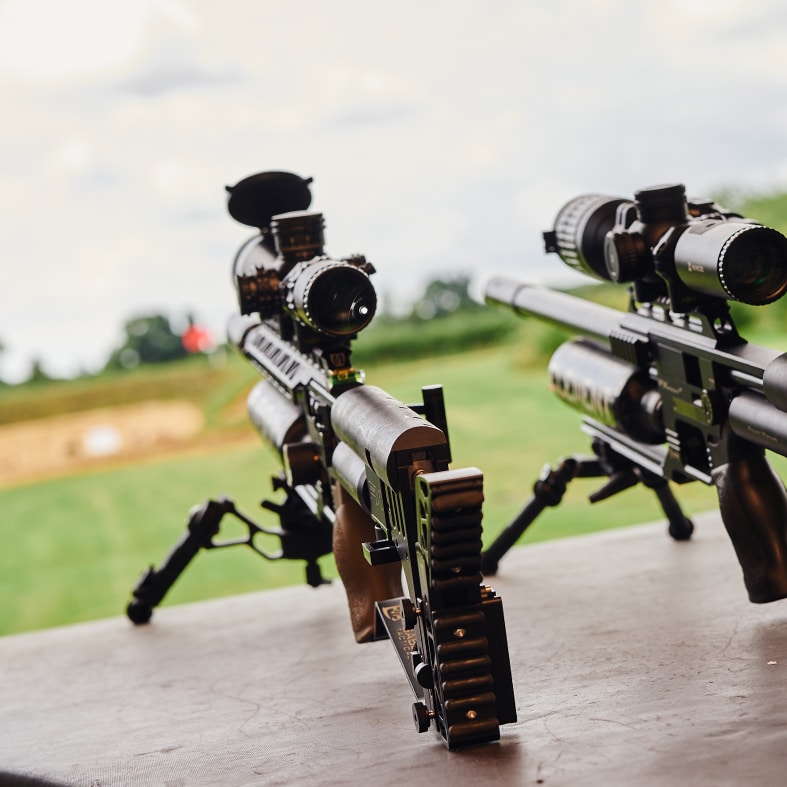

FAC-rated air rifles offer versatility in a wide range of shooting situations, but UK shooters have been slow to catch on. Paul Hill, CEO of Corinium Rifle Range, takes a closer look at the pros and cons.
At Corinium Rifle Range, we are always looking for something new; an idea, a discipline or just new kit. I’ve no idea where some of my ideas and plans come from, they just spring to mind! However, my fascination with high-powered air rifles was born from necessity more than anything else. My good lady likes to keep the range looking its best, and she spent a tidy sum on new plants for the car park. If you plant deer food, you attract deer. And if you plant rabbit food, you attract rabbits. The expensive plants suffered and I was tasked with getting rid of Mr Rabbit and his family.
Unfortunately, the location of the planters doesn’t allow the safe use of the .22LR and was out of range for a sub 12ft-lb air rifle. However, what I also had was an FAC-rated air rifle in .30 calibre. The ability to adjust the power that the rifle delivers was a perfect solution and the rabbit population dwindled rapidly.
This got me thinking: I have spent the last 15 years or so since I built the range concentrating on centrefire rifles.
Rimfires have their place, too, but I had completely overlooked higher-powered air rifles. The more research I did, the more surprised I became about the size of the market, albeit mostly in South Africa and the US. There, air rifles have a huge following, with calibres up to .50 (and bigger!) used effectively for hunting large game.
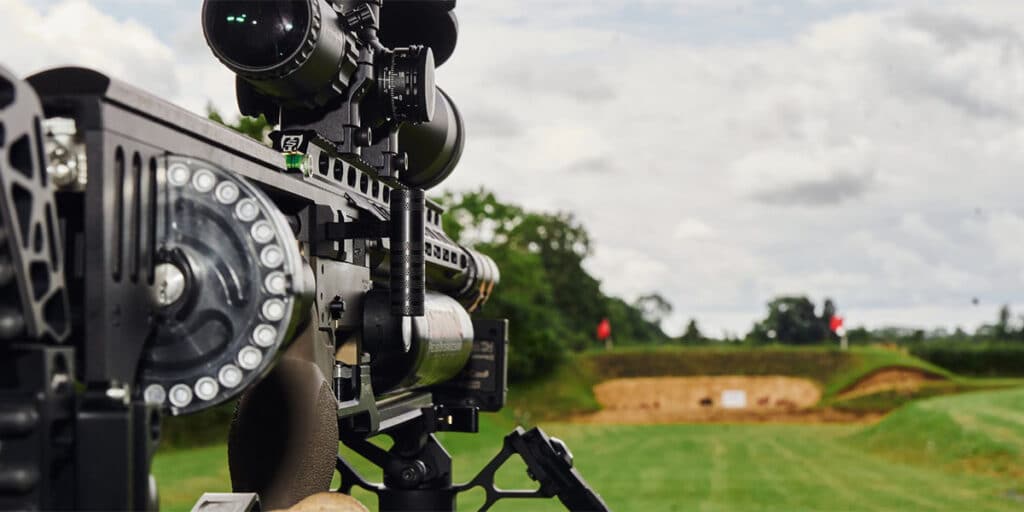
So, how does an FAC-rated air rifle differ from a standard air rifle? The legal limit for a non-FAC rifle in the UK is 12ft-lb which is more than capable out to 25-30m, or a little more with well-placed shots. Every projectile, whether from an air rifle, rimfire or centrefire, has a trajectory curve. The path of the projectile in flight is affected by gravity (elevation), and wind (windage). Sub 12ft-lb air rifles are the most affected, due to the lower energy (small pellet, low velocity), naturally followed by rimfires and then centrefire rifles. An FAC-rated air rifle is similarly affected but, down to simple physics, less so than a non-FAC version and more than a rimfire.
Where it wins is in the sheer versatility of the rifle. Lower power settings are ideal for closer work, perhaps around farm buildings, but you still have that reserve of power for longer ranges. It makes it vital that the shooter is able to estimate distance and wind accurately, and a small, relatively cheap rangefinder and scope with a ballistic reticle solves that problem. Plenty of practice wouldn’t go amiss too!
The rifles themselves are very similar in looks to standard air rifles, although they often have larger capacity air bottles to help sustain a higher shot count. Certain makes have an extra chamber called a plenum, a smaller sub-air bottle if you like, to store the air that will discharge the projectile immediately, rather than from the main bottle.
Many of the rifles are highly tunable, enhancing their versatility and range. Most FAC air rifles in the UK are either .22, .25 or .30 calibre and are capable of delivering up to 90ft-lb, depending on how they are tuned and what projectile is being used. They are certainly more than capable of killing cleanly at a variety of ranges and are far less prone to a dangerous ricochet, as well as being more consistent and accurate.
Probably the biggest advantage over both non-FAC air rifles and rimfires, is that rather than filling a gap between the two, they effectively cover both bases, and do both jobs better!
Obviously, where there are advantages, there will be disadvantages. The key one is firearms licensing. During the pandemic, home visits and FAC applications stopped, and since then many police forces claim they have never really recovered, with the lack of staffing continuously being rolled out as an excuse for the sub-optimal service many applicants are receiving – or not, as the case may be. One can assume that FAC licensing is the singular biggest hurdle for high-powered air rifles, as many shooters just don’t want the hassle.
Without opening a can of worms and drifting off-topic, I think it is safe to say that it’s never been so difficult to obtain a firearms licence. We are regularly hearing of waiting times of over 12 months for a straightforward application. Perseverance is key; do not give up, be put off or fobbed off. If you have a good reason, such as pest control or target shooting as a member of a club, and can tick a few other sensible boxes, there is every likelihood an application will be successful. As a bonus, in my experience, most constabularies see an FAC-rated air rifle as a much safer option than a rimfire and are more likely to grant one.
Another disadvantage is air consumption. More power, more air! Typically, regulators will be set around 60-150PSI. That, coupled with a larger calibre, will certainly bring down the shot count. Mine are set around 100PSI on my .22, 150 on the .25 and 180 on the .30. This means larger capacity air cylinders and more regular refills. One particularly well-known South African hunter has two 50-litre bottles in his truck!
The ability to shoot over much longer ranges might also be seen as a disadvantage in that it will require rangefinders and scope reticles to suit. My choice of rangefinder is the Sig Sauer Kilo 1,000 BDX and, with a smartphone app, I can input all the ballistic data, set any parameters and be sure that, providing I do my bit, we’ll be having rabbit pie. I thoroughly enjoy the technical side, especially when it works!
As an aside, the South Africans and Americans are pushing the boundaries even further with their use of high-powered air rifles for target shooting. We shouldn’t forget that most air rifles are used for just that. If even a small fraction of that sector started to look more seriously at higher-powered air rifles, it would see the popularity and demand grow more quickly. I regularly shoot out to 250m with mine; it’s way more fun than doing so with my centrefires and I’m very seriously considering taking one with me to South Africa next year.
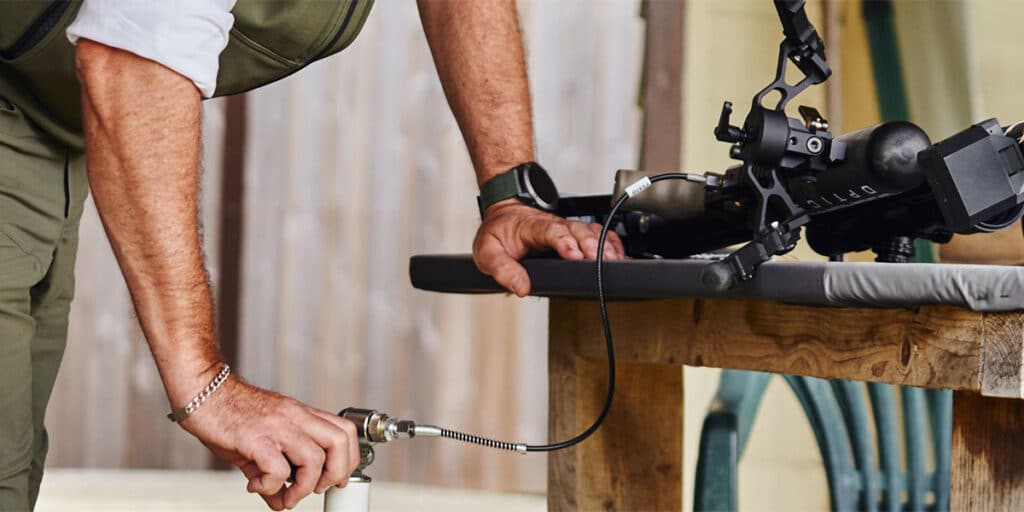
Typically, there is a huge choice of rifles available, with all the main manufacturers having models available, but for me there was only one choice: FX Airguns. When I select a rifle, it has to fulfil several duties. I like to be able to hunt all over the world with them, use them on the range for tuition, and plink targets occasionally.
I use many different calibres for different purposes, ranging from .22LR to .470NE. So, durability, versatility and ease of use are paramount, along with a bit of a twist on the norm. For me, FX Impacts tick all the boxes; one chassis can support all different calibres, with interchangeable barrels, and different barrel liners and twist rates for a wider array of projectile weights. And there’s a full array of extras, such as adjustable butt plates, cheek risers and rails, available from Sabre Tactical alongside numerous upgrades from FX themselves. I use a MK2 and MK3, depending on what I’m doing, with a few add-ons from Sabre Tactical, upgraded grips and Donny FL moderators.
When it comes to optics, I am using a HIK Micro Alpex NV scope on a 700mm .22 barrel MK2, and a 600mm .25 barrel on a MK3 coupled with an Element Optics Titan 5-25×56 FFP scope. First focal plane (FFP) types, whereby the holdover/under mil-dots remain the same, regardless of the magnification, are essential.
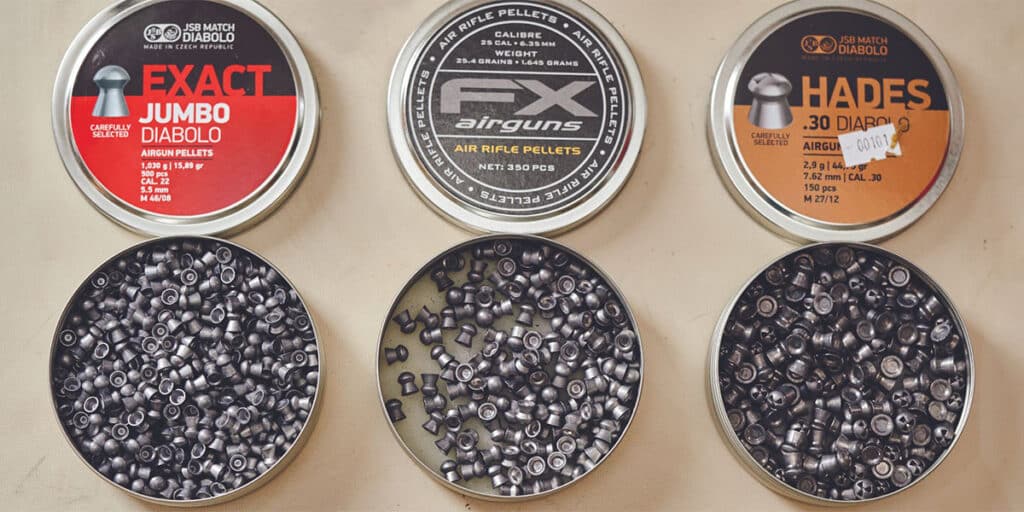
Projectile development has come on in leaps and bounds, with a big move to slugs, which have a much higher ballistic co-efficient, better stability and accuracy, and higher down-range energy delivery with better/cleaner kills. The FX barrels also have the ability to change between a slug or pellet air-port. The ability to tune rifles by adjusting regulators means that a vast array of slug/pellet weights and designs can be selected and then finely tuned to deliver more consistent velocities, energy and accuracy. In the .22 I am using a Patriot Javelin 34gr slug, giving me 58ft-lb at 875fps, which is perfect up to 100m for rabbits. In the .25 I’m using a FX Hybrid 26gr slug, giving me the same 58ft-lb at 1,025fps with a flatter trajectory over range. I’m still tinkering with the .25 and some new, heavier slugs to get maximum versatility from it for targets and longer-range quarry.
Unfortunately, the UK is some way behind other countries when it comes to FAC air rifles and firearms in general. Personally, I think there is a huge gap in the market for them here. For those regular non-FAC air rifle shooters, I would encourage you all to consider the benefits one would bring and try to get behind one to see how effective they can be. For those rifle shooters who use rimfires or centrefire rifles and want something a bit different, give FAC airguns a go. Bearing in mind the increasing cost of ammunition, they really do represent great value and great fun.
Projectile development has come on in leaps and bounds, with a big move to slugs, which have a much higher ballistic co-efficient, better stability and accuracy, and higher down-range energy delivery with better/cleaner kills. The FX barrels also have the ability to change between a slug or pellet air-port. The ability to tune rifles by adjusting regulators means that a vast array of slug/pellet weights and designs can be selected and then finely tuned to deliver more consistent velocities, energy and accuracy. In the .22 I am using a Patriot Javelin 34gr slug, giving me 58ft-lb at 875fps, which is perfect up to 100m for rabbits. In the .25 I’m using a FX Hybrid 26gr slug, giving me the same 58ft-lb at 1,025fps with a flatter trajectory over range. I’m still tinkering with the .25 and some new, heavier slugs to get maximum versatility from it for targets and longer-range quarry.
Unfortunately, the UK is some way behind other countries when it comes to FAC air rifles and firearms in general. Personally, I think there is a huge gap in the market for them here. For those regular non-FAC air rifle shooters, I would encourage you all to consider the benefits one would bring and try to get behind one to see how effective they can be. For those rifle shooters who use rimfires or centrefire rifles and want something a bit different, give FAC airguns a go. Bearing in mind the increasing cost of ammunition, they really do represent great value and great fun.


BASC made contact with the Labour Party earlier this week following statements by Sir Keir Starmer regarding the firearms licensing process.
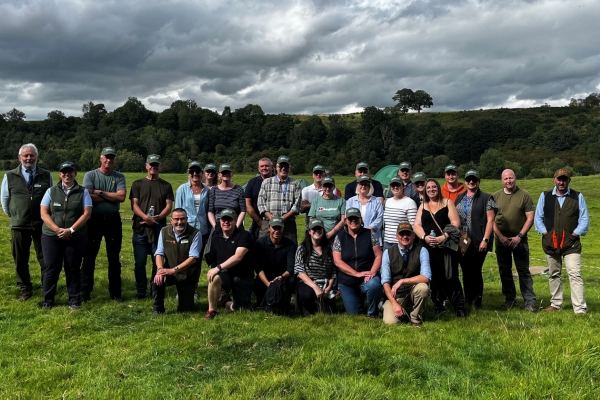
More than 20 members of Cumbria constabulary’s firearms licensing team attended a recent awareness day run by BASC.

BASC met the new Policing Minister to raise concerns affecting the shooting community, including a forthcoming consultation on plans to merge shotgun and firearms licensing.